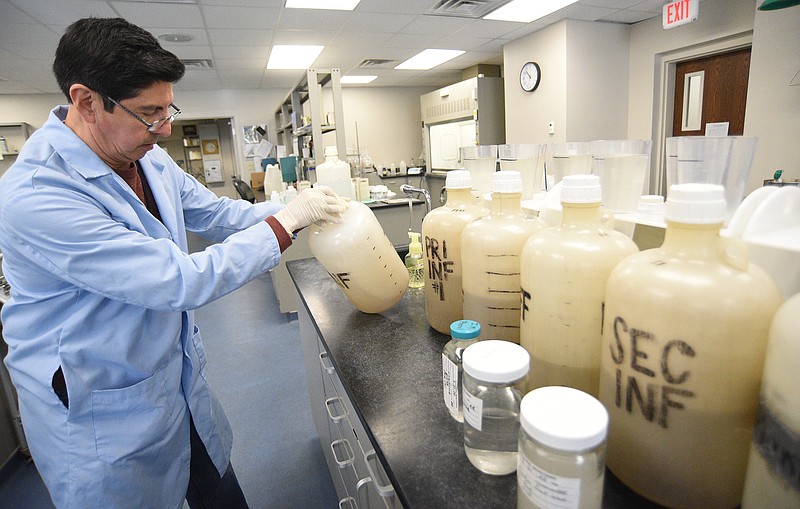Not all COVID-19 news is bad news.
Sure, there are reports of at least one new extra-contagious variant of omicron, as well as a lesser-known delta-omicron hybrid, spiking new surges in parts of Europe and Asia. And, yes, this has scientists worried that these mutating COVID bugs may soon push up cases in the United States as well.
Actually, these new bad actors already are here. The CDC reported Tuesday that the newest omicron variant, BA.2, accounted for about 35% of new infections the week before, and Dr. Eric Topol, head of Scripps Research Translational Institute, told the Associated Press the U.S. likely will see an uptick in cases in the next few weeks.
"It's inevitable we will see a BA.2 wave here," Topol said.
As for the other COVID brat - the hybrid that some in the public are calling "deltacron" - experts just don't yet know enough about it to talk much. They say the hybrid, now detected at "very low levels" in France, the Netherlands and Denmark, "doesn't pose much of a threat right now but shows how wily the coronavirus can be," the AP wrote. Two recent studies, not yet peer-reviewed, have found a tiny number of hybrid cases in the U.S.
OK, granted, it's hard to see much "good" news in this, other than the fact that the "wave" hasn't begun yet so there's still time for the unvaxed and undervaxed to get right with science.
But that's the thing: Given the way Southern states, especially Tennessee, have simply spurned vaccines, masking, social distancing, testing - even continuing regular counts of cases - how would we know new danger is lurking and we need to prepare? (Tennessee's COVID-19 statewide dashboard's last report is still dated Jan. 2.)
We'd know from the regular testing that continues in our sewage treatment system.
We'd know - assuming our lawmakers don't find a way to shut this down, too - because experts are measuring the amount of genetic fragments of coronavirus found in sewer water flushed by infected people. Although the science isn't exact, the concentration of these fragments helps shed light on whether COVID-19 is circulating at higher or lower levels in the community - often earlier than is reflected in case reports from health departments.
This testing has been ongoing here and in other urban areas since May 2020.
Chattanooga's treatment facility testing found the highest viral concentration in wastewater during the omicron surge on Jan. 10, at about the same time the Hamilton County Health Department (which is still regularly counting and reporting cases even if the state is not) was seeing an average 645 new COVID-19 cases per day over a week's time.
The latest report based on last Monday's sampling found a low effective viral concentration, again closely matching the county's average count of five new COVID-19 cases per day in the past week.
That, friends, points up the really good news in this: We can have some trust in our numbers - our hyper-local numbers. And we have a secondary early warning system - despite our COVID-denying state lawmakers.
Kaiser Health News reported earlier this month: "[W]here available, the [wastewater testing] data has already proven powerful. During the winter surge caused by omicron, California, Colorado, New York, and Texas first detected the variant via sewage. Central Valley [California] health officials have said that sewage monitoring has assured them that declines in COVID cases are real, and not a distorted reflection of declines in reported testing."
Or here, we can say our decline in cases is not a distorted reflection of our wingnut GOP lawmakers and irresponsible governor's decisions to decrease Tennessee's focus on both COVID preventions and COVID case reporting.
In fairness, there's more to trusting our public health data about COVID than just politicians' input.
Kaiser's report notes that for COVID surveillance, wastewater also isn't subject to the tricky inconsistencies that come with testing for the coronavirus in humans. COVID testing shortages have been a persistent problem both from supply-chain shortfalls as well as wide variation in local governments' response.
Similarly, long delays in test results left some health officials weeks behind in detecting and monitoring infection trends. And more recently, at-home tests, whose results rarely find their way to public health departments, have proliferated. What's more, for people living in lower-resource communities, there are incentives not to test at all, as a positive test can be a huge problem for people who can't take time off work or keep their children out of school.
By contrast, Kaiser reports, sewage surveillance is an effective and relatively low-budget detector - far less reliant on any aspect of human whim.
That's the good news. Everyone uses the bathroom, and around 80% of us Americans (including most of us in this greater Chattanooga region) do so into a sewer system. If that sewer system gives us a new early warning siren on COVID-19, aren't we the lucky ones?
